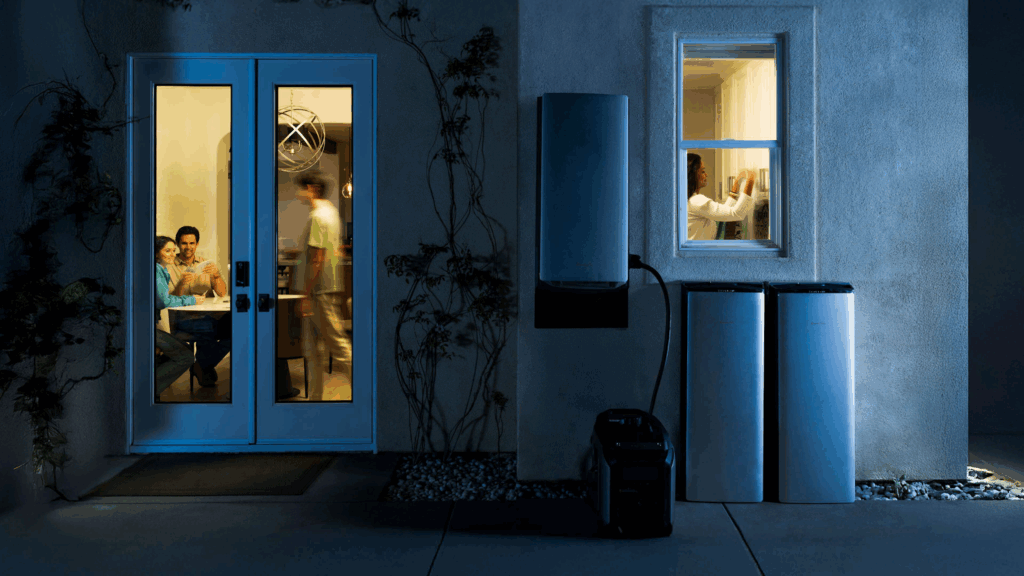
When the lights go out, every homeowner wants the same thing — a reliable source of backup power that keeps their household running smoothly. But choosing the right whole home battery backup system isn’t as simple as comparing prices or storage capacity. Many critical details often get overlooked until after installation, when changes become expensive or inconvenient.
This guide covers the most important factors homeowners tend to miss — and how paying attention to them can help you make a smarter, longer-lasting investment in your home’s energy resilience.
Why Whole-Home Backup Systems Are Growing in Demand
Across the U.S., blackouts and grid instability are becoming more common. Severe weather, heat waves, and aging power infrastructure have led to more outages than ever before. Homeowners are no longer treating backup power as a luxury — it’s becoming a necessity.
While traditional gas generators have been the go-to for decades, cleaner and quieter alternatives like whole home battery backup systems are now taking the lead. They offer instant power, zero emissions, and seamless integration with renewable energy sources such as solar.
Yet despite the growing awareness, many buyers focus only on capacity or cost, overlooking factors that affect real-world performance, safety, and long-term satisfaction.
1. Assessing the Right System Size for Your Actual Needs
One of the most common mistakes homeowners make is underestimating or overestimating their power needs.
A whole home battery backup system isn’t one-size-fits-all. The right setup depends on how much electricity your home uses daily and which devices you need to keep running during an outage.
- Essential load coverage (10–15 kWh): Powers lights, Wi-Fi, a fridge, and basic outlets for about a day.
- Partial home coverage (20–30 kWh): Adds more appliances, maybe a washing machine or small HVAC system.
- Full-home coverage (40–60 kWh+): Supports everything — heating, air conditioning, and heavy-use electronics for multiple days.
Many homeowners only consider “storage capacity” but forget about power output, measured in kilowatts (kW). A system might have plenty of stored energy but may not deliver it fast enough to run large appliances like air conditioners or electric ovens simultaneously.
Tip: Review your utility bills to see your average daily kilowatt-hour (kWh) usage, and ask your installer for a load analysis before choosing a system.
2. Ignoring Installation Site and Conditions
Another overlooked aspect is where the system will actually be installed. A whole home battery backup system needs space, ventilation, and sometimes temperature control.
- Indoor vs. Outdoor: Many models can be installed outdoors, but extreme heat or cold can affect battery efficiency and lifespan. If you live in regions with freezing winters or scorching summers, an insulated garage or basement may be better.
- Clearance and Accessibility: Installers need safe access for wiring, maintenance, and monitoring hardware. Crowded or damp spaces can complicate installation.
- Flood Zones: If your area is prone to flooding, mount the battery higher off the ground to prevent damage.
Choosing the wrong location could shorten battery life or make servicing difficult down the road.
3. Overlooking Compatibility with Existing Electrical Panels
Your backup system can only be as reliable as the wiring it connects to. Some homeowners invest thousands into a high-capacity whole home battery backup but forget to check whether their main electrical panel is compatible.
Older homes may require panel upgrades to handle high current loads or dual power sources (grid + battery). If your electrical system isn’t properly configured, power transfers could trip breakers or even cause damage.
Tip: Before installation, have an electrician or installer evaluate your breaker panel. If necessary, upgrade it to a smart panel that can automatically switch between power sources and manage which circuits stay active during an outage.
4. Neglecting Smart Energy Management Features
Today’s top whole home battery backup systems come equipped with intelligent control technology — but not everyone takes advantage of it.
Smart energy management allows you to:
- Monitor power usage in real time via a mobile app.
- Set priorities (for example, keep your fridge and Wi-Fi running but turn off HVAC overnight).
- Schedule charging during off-peak hours when electricity is cheaper.
- Integrate with solar systems to automatically charge during the day.
Without these features, you may not be using your system to its full potential. Smart control software isn’t just convenient — it improves efficiency, extends battery life, and can reduce monthly utility bills.
5. Forgetting About Solar Integration (or Future Solar Plans)
A whole home battery backup system alone can handle outages, but pairing it with solar panels unlocks a new level of independence.
Solar energy keeps your battery charged indefinitely during daylight, turning your home into a mini power plant. During extended outages, solar integration means you’re not limited to the battery’s initial capacity — you can keep recharging it daily.
Even if you don’t have solar now, consider whether you might add it later. Not all battery systems are designed for solar compatibility. Choosing a solar-ready model upfront can save thousands of dollars if you decide to expand later.
Tip: Ask your installer whether the system supports bi-directional charging (solar + grid). A hybrid setup gives you maximum flexibility.

6. Overestimating Runtime Expectations
Another common misconception is assuming that a whole home battery backup can run indefinitely. While systems can provide impressive runtime, they’re not unlimited.
Every appliance you run drains energy — and high-demand items like electric dryers, ovens, or HVAC units can reduce your backup duration significantly. For instance, running a 5-ton air conditioner continuously might consume as much energy in one hour as your fridge uses in an entire day.
Managing expectations (and loads) ensures your backup power lasts longer. Smart panels or apps can help you prioritize circuits automatically during an outage.
7. Ignoring Local Incentives and Tax Credits
Budgeting for a backup system can be intimidating, but many homeowners overlook incentives that significantly reduce upfront costs.
Under the Federal Investment Tax Credit (ITC), you can claim up to 30% of the installation cost of qualifying solar and whole home battery backup systems. Many states also offer additional rebates or low-interest financing.
For example:
- California’s SGIP program provides rebates for energy storage, especially in wildfire-prone areas.
- New York’s NY-Sun program and Massachusetts’ SMART incentives offer savings for solar-plus-storage installations.
- Some utility companies even pay homeowners for contributing stored energy to the grid during peak demand.
Checking local programs before installation can make a big difference in overall affordability and return on investment.
8. Underestimating Long-Term Maintenance and Warranty
Many homeowners assume that once installed, their whole home battery backup system will take care of itself forever. While maintenance is minimal compared to fuel generators, it’s not zero.
Regular checks help ensure the battery and inverters are operating at peak performance. Some manufacturers also require annual system health reports to maintain warranty coverage.
Speaking of warranties, not all are created equal. Look for coverage that includes both performance (capacity retention) and hardware protection for at least 10 years. This ensures your system maintains most of its storage capacity over time.
9. Failing to Plan for System Scalability
Life changes — and so do energy needs. You might add an EV, expand your home, or start working remotely, increasing electricity demand. Unfortunately, some battery systems can’t be easily expanded after installation.
Modular systems, however, allow you to add more storage units as your needs grow. When evaluating your whole home battery backup, consider whether it can scale with your future lifestyle.
If your system maxes out at 15 kWh but your family starts consuming twice that energy in a few years, upgrading could mean replacing the entire setup instead of simply adding modules.
10. Ignoring the Importance of Professional Installation
Finally — and perhaps most importantly — never overlook who installs your system. Even the best equipment can perform poorly if wired incorrectly or placed in unsuitable conditions.
A professional installer ensures:
- Safe and code-compliant wiring.
- Proper ventilation and weatherproofing.
- Efficient setup for both grid-tied and solar-ready configurations.
- Seamless integration with existing home circuits and transfer switches.
Reputable installers also handle permits, inspections, and incentive paperwork — reducing headaches and ensuring eligibility for rebates.
Why Attention to Detail Pays Off
A whole home battery backup system is more than a one-time purchase — it’s a long-term investment in your home’s comfort, safety, and independence. Overlooking key details during the selection process can lead to higher costs, shorter runtimes, or limited scalability later on.
By focusing on compatibility, smart management, location, and professional installation, you’ll not only get better performance but also extend the life of your system and maximize its value.
Conclusion
Choosing a whole home battery backup isn’t just about surviving the next power outage — it’s about building a smarter, more resilient home. Taking time to evaluate the often-overlooked details will ensure your system performs exactly as you expect for years to come.
Whether you’re integrating solar, optimizing for energy efficiency, or planning for future growth, the right decisions today will keep your home secure, comfortable, and powered — no matter what tomorrow brings.










